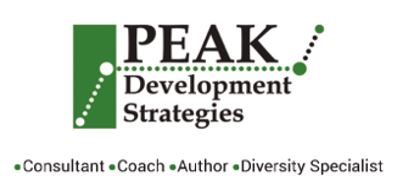Harnessing a Firm-Wide Business Development Culture: Customer Directed Focus
Everyone is in business development…I know there are those that may bristle at that statement. The reality is that everyone who has a job in an organization is in a business development role all day every day. We typically only view this as it relates to our customers and those that have “business development” in their titles. If we look a bit deeper, are you not selling your ideas to your coworkers or supervisors? The intentional effort you put into your work is developing your part of the business and those efforts are meant to get the attention of those you are working with in the company – coworkers and customers alike. Having said that, let’s look at the concept of “Customer Directed Focus (CDF).”
CDF is attaching the customer to everyone and everything in the organization. If you are a company that makes products with large pieces of steel that attach to farm equipment, how might CDF work? Instead of seeing parts made from steel that have a margin of profit, learn to see that part attached to the machinery that farms the fields to produce the products that feed livestock or people. Once we attach what we do to people and not to inventory or dollars, things change in an organization for the better.
Long-term profitability depends upon your customer’s TOTAL satisfaction with your products and/or goods as well as the customer service they receive at every touch point in the company. This extends through every level of interaction in the business development process. It is the sum of all their experiences. If you have rocket stars for your outside business development department and mediocre customer service representatives, you still risk losing the customer. Satisfaction from the sales process to delivery and finally to customer service, must be the number one objective to retain a relationship where all parties are:
- Comfortable
- Confident
- Conscientious
Remember, perception is in the eyes of the beholder meaning the person who is on the receiving end of the process. Did you implement solutions that achieve the desired results? Did you accomplish the goals and tasks at every point in the business development process? Are the relationships based on trust and respect? It is always a good idea to get feedback from your clients on a regular basis to identify areas of weakness in the process – all areas of the process. This feedback should not just come from your happiest and most profitable customers, but from those who have had issues or have been challenging to work with.
So what do customers want?
Some general topics are listed below:
- Convenience – not in your eyes, but in theirs. The challenge today to define convenience may have generational differences. What is convenient to a Baby Boomer in their 50’s may not be convenient to a thirty-something Millennial. Companies may need to diversify these efforts in business development to embrace our changing workplace. This may involve looking at their own workforce, technology, and processes to identify gaps as well as a forward thinking view into the future.
- Consistency – again, not a general statement. Personality differences as well as a customer’s past history impact the definition of consistency. Part of the business development process should define what a customer truly needs and determine if the company can really meet those expectations.
- Reliability – expectations need to be understood throughout the process. No stone unturned is the best approach. Communication internally with those that are part of the delivery process as well as with the customer. CDF is about keeping attention on the customers, anticipating their needs and valuing their input. Revenue and profitability will flow from implementing the CDF culture throughout an organization.
- Respect – best described in this quote:
Watch your thoughts; they become words.
Watch your words; they become actions
Watch your actions; they become habits.
Watch your habits; they become character.
Watch your character; it becomes your destiny.
—Frank Outlaw
In a CDF organization, ALL STAFF regardless of their roles or seniority MUST target their work/focus to fulfill customers’ needs. It is the people with their behaviors that create the distance and differentiation from competition. That can be at either end of the scale from the competition – above or below. It is in the “conversations” they have with the customer as well as the “conversations” they have with their coworkers. It’s about the ability of employees to respond to customers based on their unique needs. They must engage them in an emotionally positive memorable experience.
So how do we accomplish this?
- Align with the customers by:
- Building the unique strategy between you and your customer. This is a strategy that looks great on paper as well as comes to life in the CDF relationship.
- Educating all team members (anyone that is part of any touch point with the customer) as to “why” we are doing this. This is changing the focus, as in the farm equipment reference earlier in this article.
- Engaging all team members to participate (WIIFM – What’s In It For Me (meaning them)). If you understand the “why” of your employees, you can nurture that and gain their buy-in. In the end, this can be a powerful part of the pathway to profitability and employee/customer retention. Another term would be MMFA – Make Me Feel Appreciated. This is the goal for the employee as well as the customer.
- Equip:
- Provide tools and training at ALL levels of your company. Invest in the professional development of your people and it will pay you back exponentially.
- Build tracking tools to measure results over time. Inspect what you expect. By doing this, you can identify weaknesses; perhaps before it has a significant impact on your customer relationships.
- Define the way you do business:
- Internally with each other through developing your Mission, Vision, Purpose and Values (MVPV) in your organization. This is an effort where every level of the organization gives their input. It is what you hold as the measuring stick for the quality of your service as well as your people.
- Externally with your vendors and customers by living up to the MVPV at every point of the business development process. Vendors and customers also must meet the same bar that is set through the MVPV.
What we need to know is as much input from the customer prior to design of the product. We need to know as much about the customer as we can know as well as (this may sound strange), as much about the customer’s customer as we can know. Why? This is that slight edge. Your sincere interest in helping your customer be successful goes a long way in CDF. It simply defines it.
What we need to do is to look at all aspects of our job through the eyes of the customer.
One way we can we do this is to train everyone in the organization to be an expert in asking questions.
The difference in how we ask questions can make the difference in what the outcome of a conversation can be:
- What does human nature tell us to do when we walk in a store and the clerk asks us the famous question “Can I help you?” (What did you just say to yourself? “Just looking.”)
- What kind of a conversation ensues when someone says to us “Nice day we are having.”
- How do you feel when someone opens a conversation by telling you,
- “Let me tell you how this all works” or
- “Let me show you how this [insert name of product or service] will solve all your problems?”
- How do you feel when someone tells you:
- “No, we can’t do that”
- “No, our policy states…”
- We do need to say NO to people, it is how we say it that counts.
What can differentiate you and your company is the information we gain prior to any answer we give.
Do you have wonderful intellectual conversations about the issues/problems, but never walk away with an understanding of how this impacts the person/people in the company? A key differentiator between you and every other person out there is seeking to understand the personal impact to an individual. I will reiterate, this is not just with your customers, but training coworkers to do this each other. Modelling CDF within the organization will also lead to CDF being implemented with customer contact.
A different approach would be to understand the impact of the issues/problems as it relates to each person involved by taking it deeper. This all must be done softly, with empathy, and a desire to understand. The person needs to feel safe and developing trust is imperative. Ways that someone can do this are:
- Take notes using their words and then entering those words in the customer relationship management system (CRM) for potential future use.
- Validate that you completely understand what their pain/issue/problem really is before moving forward. Don’t’ be afraid to ask questions to clarify. This is not a place where assumption would lead to success. The heart of conflict resolution and customer service is the need to be understood.
- Use the 80/20 rule…they talk 80% of the time. A great CDF tool is giving the customer the time and space to share what is on their minds.
Here are some great questioning techniques that can set you apart from your competition and develop loyal raving fans in your customers.
- Crossing the bridge – moving the process forward to the next level:
- What were you hoping I could do for you?
- What should our next steps be?
- What would you like to do next?
- Clarifying statements – a way to show someone that you are listening as well as shore up any areas where there may be misunderstanding:
- Let me see if I understand…
- So what I am hearing is…
- When you say….exactly what do you mean?
- Followed by “is that correct?”
- Confirming – used either to elicit agreement or disagreement:
- “Do my recommendations make sense?”
- “Does this make sense?”
- Reversing – used to pass the responsibility of continuing the conversation back to the prospect by answering a question with a question:
- They ask, “When can I expect delivery?”
- You ask, “When would you like delivery?”
- Problem questions – questions to uncover the problems that you can solve with your services:
- “What areas would you like to improve?”
- “Are you having problems tracking projects?”
- “Are you satisfied with the follow up?”
- “Help me understand the problem(s) you are having?”
- “What challenges do you face on a day-to-day basis?”
- Consequence questions – the attempt to develop the problems acknowledged by the customer, to the point that they agree that they are large:
- “So downtime is a concern for you?”
- “What effect is that having on _________ [dollars, time, resources, stress – whatever seems appropriate to fill in this blank]?”
Once your employees begin to use this technique with customers directly or indirectly to move the business development process along with success, they should begin to use these with each other. This can go a long way in conflict resolution and team building.
It’s easy to talk CDF, implementation is another subject. Companies that commit to walk the walk of CDF will see that the strategy works in all areas – happy employees, long-term relationships with happy clients, and financial success. This is a paradigm shift that will take time, you will get resistance from your employees and your customers may be confused at first, but if you stay the course the cultural change will be worth it for everyone involved.
Featured Author for Business Development e-magazine 22

Recent Comments